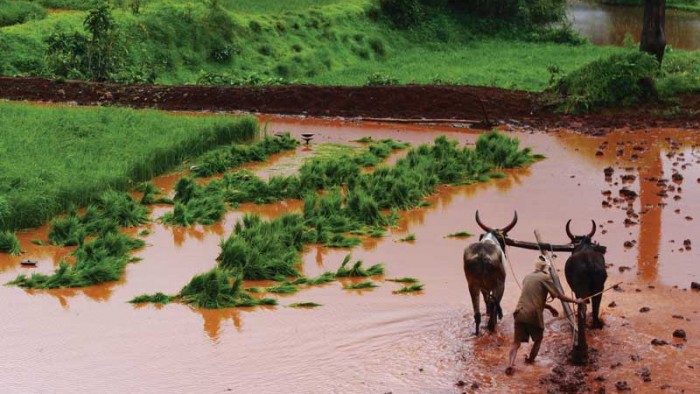 Social Sciences
Social Sciences
Revealing the Invisible Animal

You can learn a lot about economic development from a donkey.
Consider the move from farming to industrialization in South America and equatorial Africa. Neither region had indigenous domesticated animals suitable for plowing, so farmers had no reason to invent plows. Instead, for centuries, people farmed with digging sticks and hoes.
In South America, this changed when European invaders arrived—bringing their plows, donkeys, and other draft animals with them. Because the New World lacked diseases that would sicken the imported livestock, they thrived. This, in turn, made it possible to use plows and they were soon widely adopted.
In equatorial Africa, on the other hand, diseases like sleeping sickness made it difficult to keep Eurasian draft animals alive. Farmers had no choice but to continue with traditional digging sticks and hoes; it wasn’t until the 20th century and the introduction of tractors that plow technology became widespread in the region.
The point, UO sociologist Richard York says, is that draft animals such as horses, cattle, and donkeys can tell us a lot about how a region grows.
York is urging his field to see animals in a new light—as living, breathing creatures that can profoundly influence the way civilizations develop, and that are, in turn, changed by their contact with humankind. It’s a new approach that can be applied to many areas of sociology.
York outlined his ideas in “The Invisible Animal: Anthrozoology and Macrosociology,” coauthored with Philip Mancus, PhD ’09, a professor of psychology and sociology with College of the Redwoods. The paper received a 2013 distinguished scholarship award from the American Sociological Association.
The association said it recognized the work because it encourages and supports the development of theory, research, and teaching about the complex relationships between humans and other animals.
“In the process, it is anticipated that the light we shed on these issues will increase the well-being of both humans and other animals,” the association said, on its website.
That’s certainly how York sees it—he’s convinced that just about every area of sociology can benefit from bringing animals into the center of attention.
For York, fruitful areas for study include looking at societies’ differing uses of humans, animals, and fossil fuels to power their technologies; the impact of animals in warfare over the centuries; and how today’s factory farming can lead to the rapid spread of diseases like avian flu.
Bringing together disparate ideas to gain novel insights is nothing new for York. As a macrosociologist specializing in environmental sociology, he looks at the big picture of how societies affect their environments—a relatively new discipline within the field.
“Forty years ago, almost no sociologist would ever have asked, ‘Why is it that some societies use so much fossil fuel and others don’t?’ They weren’t concerned about pollution or extinctions of animals or water resources,” York said. “A lot of my analysis shows what happens with economic growth, technological changes, how that actually influences the environment.”
York has an abiding interest in the environment: as director of the Environmental Studies Program, he helps bring together faculty from natural sciences, social sciences, and humanities to examine the big questions that arise from the interaction of humans and their environments.
“Academia is often divided,” York explained. “People who are philosophers don’t necessarily regularly communicate with people who are geologists. Environmental studies gives us the opportunity to build connections across types of scholarship.”
—Kit Alderdice
Photo Credit: cc-sandeep-MM-by-nc-2.0


 Twitter
Twitter Facebook
Facebook Forward
Forward